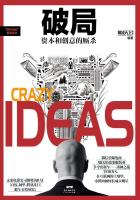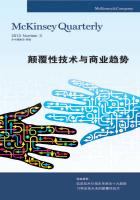1.Albrecht,James W。,and Vroman,Susan B。1992,“Dual Labor Markets,Efficiency Wages,and Search”,Journal of Labor Economics。Chicago。Oct。Vol。10,Iss。4;p。438-462.
2.Albrecht,James and Axell,B。1984,“An Equilibrium Model of Search Unemployment”,Journal of Political Economy,92:824——40.
3.Aghion,P。,and Howitt,P。1994,“Growth and Unemployment”,Review of Economic Studies 61:477-494.
4.Andolfatto,D。,1996,“Business cycles and labor-market search”,The American Economic Review。Nashville:Mar。Vol。86,Iss。1;p。112(21 pages)
5.Arrow,K。,1973,“Higher Education as a Filter”,Journal of Public Economics,2,pp。193-216.
6.Banerjee,Biswajit and Bucci Gabriella,1995,“On-the-job search in a developing country:An analysis based on Indian data on migrant”,Economic Development and Culture Change;Apr。565-583
7.Bishop,J。and Carter,S。1991,“The Worsening Shortage of College Graduate Workers”,Educational Evaluation and Policy Analysis 13(3):221-255.
8.Birger W。1988,“General Equilibrium with real time search in labor and product markets”,Journal of Political Economy;Aug;96,4;821-830
9.Blaug,Marke。,1972,“The Correlation between Education and Earnings:Whant Does Signify”,Higher Education,1(1):54
10.Blaug M。,Layard R。and Woodhall M。,1969,“The Causes of GraduateUnemployment in India”,AllenLane:The Penguin Press,pp。237-239.
11.Blanchard O。,Portugal P。2001,“What Hides behind an Unemployment Rate:Comparing Portuguese and U。S。Laor Markets”,American Economic Review,91,187-207.
12.Blanchard Olivier J。and Peter A。Diamond,1989,“The Beveridge Curve”,Brookings Papers on Economic Activity,1:1——60.
13.Blau,D。M。and Robins,P。K。1990,“Job Search Outcomes for the Employed and Unemployed。”Journal of Political Economy,98,637-55.
14.Bontemps,C。,J。M。Robin,and G。J。van den Berg。,2000,“Equilibrium search with continuous productivity dispersion:theory and non-parametric estimation”,International Economic Review,41:305-358.
15.Boston T。D。1990,“Segmented Labor Markets:New Evidence from a Study of Four Race-gender Groups”,Industrial and Labor Relations Review,Vol。44,No。1(Oct。),pp。99-115
16.Bosanquet,N,and Doeringer,P。B。1973.“Is There a Dual Labor Market in Great Britain?”The Economic Journal,Vol83,No。330(Jan。):421-435.
17.Bradshaw,T。F。,1973,“Jobseeking Methods Used by Unemployed Workers”,Monthly Labor Review,35-40.
18.Brennan,J。,Kogan,M。&Teichler,U。,1995,“Higher Education and Work”。London,Kingsley。
19.Brenda Johnston,2003,“The Shape of Research in the Field of Higher Education and Graduate Employment:some issues”,Studies in Higher Education,4:418
20.Burdett,Kenneth and Kenneth L。Judd,1983,“Equilibrium Price Distributions”,Econometrica,51:955——70.
21.Burdett,Kenneth and Dale T。Mortensen,1998,“Wage Differentials,Employer Size,and Unemployment”,International Economic Review,39:257——73.
22.Burdett Kenneth and Randall Wright,1998,“Two-Sided Search with Non-Transferrable Utility”,Review of Economic Dynamics,1:220——45.
23.Burdett K。,D。T。Mortensen,1998,“Equilibrium Wage Differentials and employer Size”,International Economic Review,forthcoming。
24.Burdett Kenneth and Mortensen,Dale T。,1980,“Search,Layoffs,and Labor Market equilibrium”,Journal of Political Economy,88(August):652-72.
25.Carnoy C。;1977,“Education and employment:A critical appraisal”,Unesco:International Institute for Educational Planning。
26.Cheron,A,F Langot。2004,“Labor market search and real business cycles:reconciling Nash bargaining with the real wage dynamics”,Review of Economic Dynamics。Orlando:Apr。Vol。7,Iss。2;p。476
27.Coles Melvyn G。and Eric Smith,1998,“Marketplaces and Matching”,International Economic Review,39:239——54.
28.Doeringer,P。and Piore,M。,1971,Internal Labour Markets and Manpower Analysis。Lexington,Mass:D,C。Health。
29.Diamond,Peter A。,1971,“A Model of Price Adjustment”,Journal of Economic Theory,3:156——68.
30.Diamond,Peter A。,1981,“Mobility Costs,Frictional Unemployment,and Efficiency”,Journal of Political Economy,89:798——812.
31.Diamond,Peter A。,1993,Search,Sticky Prices,and Inflation,Review of economic Studies 60(January):53-68.
32.Diamond,P。A。,1982,“Money in Search Equilibrium”,。[Working Paper]Massachusetts Institute of Technology(MIT),Department of Economics,Working papers:297.
33.Diamond Peter A。,1982,“Aggregate Demand Management in Search Equilibrium”,Journal of Political Economy 90(October):881-894.
34.Eckstein,Z and Wolpin,K。1990,“Estimating a market equilibrium search model from panel data on individuals”,Econometrica,58:783-808.
35.Eckstein,Z。and Wolpin,K。I。,1995,“Duration to first job and return to schooling:estimates from a search-matching model”,Review of Economic Studies,62:263-286.
36.Eckstein,Z。and Green J。,van den Berg,2003,“Empirical Labor Search:A Survey”,Discussion Paper No。929,IZA。
37.Elchanan Cohn。1992,The Impact of Surplus Schooling on Earnings:Comment。The Journal of Human Resources,Vol。27,No。4.(Autumn),pp。679-682.
38.Emergency Supports for Unemploymented New Graduates。Japan Labor Bulletin,Vol。41,n0.6,June,2002,pp。5-6.
39.Dension。E。F。Education and Economic Growth。1961,Social Forces Influencing American Education,Chicago,N。S。S。E。,046-48
40.Fiszbein,Ariel。1993,“On the job search in a labor market model:A comment”,Journal of Development Economics。Amsterdam:Jun。Vol。41,Iss。1;p。153(3 pages)
41.Elchanan Cohn。1992,“The Impact of Surplus Schooling on Earnings:Comment”,The Journal of Human Resources,Vol。27,No。4.(Autumn),pp。679-682.
42.Federal Studen Aid Information Center,2003.Repaying Your Loans 2003-2004,pp。23-26.
43.Gerard J van den Berg,Geert Ridder。1998,“An empirical equilibrium search model of the labor market”,Econometrica。Sep 1998;66,5;ABI/INFORM Global pg。1183
44.Greenwald,Bruce and Joseph。E,Stiglitz。1988,“Pareto Efficiency of Market Economics:Search and Efficiency Wage Models”,American Economic Review:78:351-356
45.George Liagouras,Aimilia Protogerou and Yannis Caloghirou,2003,“ExploringMismatch Between Higher Education and the Labour Market in Greek”,European Journalof Education,Vol。38,No。4,pp。413-426.
46.Gray J。and Chapman R。1999,“Conflicting Signals:the LaborMarket for College-educated Workers”,Journal of Economic Issues,Vol。33,September,pp661-676.
47.Gregg,P。and Wadsworth,J。1996,“How Effective Are State Employment Agencies?Jobcentre Use and Job Matching in Britain”,Oxford Bulletin of Economics and Statistics,58,43-67.
48.Grubb,W。N。,1992.“Postsecondary Vocational Education and the Sub-baccalaureate Labor Market:New Evidence on Economic Returns”。Economics of Education Review。11:225-248 82.
49.Grubb,W。N。,1993,“Further Tests of Screening on Education and Observed Ability”,Economics of Education Review。12:125——136 83.
50.Grubb,W。N。,1997,“The Returns to Education in the Sub-Baccalaureate Labor Market”,Economics of Education Review。16(3):231-245 84.
51.Harald Schomburg,2000,“Higher Education and Graduate Employment inGermany”,European Journal of Education,Vol。35,No。2,pp。189-200.
52.Heckman,James J。,1979,“Sample Selection Bias as a Specification Error”,Econometrica,Vol。47,Jan。,153-162.
53.Holzer。H。J。1988,“Search Method Use by Unemployed Youth”,Journal of Labor Economics,6:1-20.
54.Howitt,Peter。1988,“Business Cycles with Costly Search and Recruiting”,Quarterly Journal of Economics 103(February):147-165.
55.Hosios Arthur J。1990,“On the Efficiency of Matching and Related Models of Search and Unemployment”,Review of Economic Studies,57:279——98.
56.Heijke H。,Koeslag M。1999,“The Labour Market Position of University Education and Higher Vocational Education in Economics and Business Administration:A Comparsion”,Education Economics。7(3):259-276.
57.Holzer,H。J。1987,“Job Search by Employed and Unemployed Youth”,Industrial and Labor Relations Review,40:601-11.
58.Insook Jeong,J。Michael Armer。1994,“State,Class,and Expansion of Education in South Korean:A General Model”,Comperative Education Review,Vol。38,No。4.(Nov。),pp。531-545.
59.ILO,1993,“Statistics of Employment in the Informal Sector”,Report for the XVth International Conference of Labor Statisticians,19-28,January 1993,Geneva
60.ILO,2003,“Guidelines Concerning a Statistical Definition of Informal Employment”in the Seventeenth International Conference of Labor Statisticians,Geneva
61.Jacob Mincer。1993,“Studies in Human Capital”,Edward Elgar Publishing Limited。
62.Jamison Dean and Jacques Van der Gagg。1987,“Education and Earning in the Peoples Republic of China”,Economics of Eduction Review,Vol6,No。2,1987,161-166.
63.Jean-Jacques Paul and Jake Murdoch。2000,“Higher Education and GraduateEmployment in France”,European Journal of Education,Vol。35,No。2,pp。179-187.
64.John T。Addison,Pedro Portugal。,2001,“Job Search Methods and outcomes”,IZA DP No。349 IZA Discussion Paper No。349 August 2001
65.John Eatwell;Murray Milgat;Peter Newman。1992,“The New Palgrave:a dictionary of economics”,中国经济出版社,293-299.
66.John T。Addison。“Job Search Methods and Outcomes”,IZA Discussion Paper,2001.
67.J。D。Sethi。1983,“The Crisis and Collapse of Higher Education in India”,New Delhi:Vikas Publishing House Pvt。Lta,P。61.
68.Jose-Gines Mora,Jose Garcia-Montalvo and Adela Garcia-Aracil,2000,“Higher Education and Graduate Employment in Spain”,European Journal of Education,Vol。35,No。2,pp。229-237.
69.Kaushi Nishida。2002,“Youth Employment Measures in Japan”,International Affairs Division,Ministry of Health,Labor and Welfare,Japan。
70.Ken Burdett and Melvyn Coles。‘Equilbrium Wage-Tenure Contracts’。Econometrica,VOL。71,NO。5(September,2003),1377-1404
71.Kivinen,O。&Rinne,R。1993,“The Education Market,Qualifications,and European Integration”,Higher Education in European,18(2),pp。24-36.
72.Lee Lung-Fei,1978,“Unionism and Wage Rates:A Simultaneous Equations Model with Qualitative and Limited Dependent Variables”,International Economic Review,Vol。19,Jun。1978,415-433.
73.——,“Generalized Econometric Models with Selectivity”,Econometrica,Vol。51,March 1983,507-512.
74.Li,Haizheng and Yi Luo,2002,“Reporting Errors,Ability Heterogeneity,and Returns to Schooling in China”,Working Paper,School of Economics,Georgia Institute of Technology。
75.Lippman,S。A。and J。J。McCall,1976,“The Economics of Job Search:A Survey,Part Ⅰand Ⅱ”,Economics Inquiry,Vol。14,pp。155-189,347-368.
76.Li,Haizheng,2001,“Economic Transition and Returns to Education in China”,Economics of Education Review 22,317-328.
77.Liu Zhiqiang,1998.“Earnings,Education and Economic Reforms in China”,Economic Development and Cultural Change 46,pp。697-725.
78.Liu Zhiqiang,2003.“The Economic Impact and Determinants of Investment in Human and Political Capital in China”,Economic Development and Cultural Change 51,823-849.
79.Livingstone,D。W。1999,“Lifelong Learning and Underemployment in the Knowledge Society:A NorthAmerican Perspective。Comparative Edu-cation”,Vol。35,No。2,Special Number(21):Education of Mature Adults。(Jun。,1999),pp。163-186.
80.Lucas,R。E。1988,“On the Mechanic of Economic Development”,Journal of Monetary Economics 22(1):3-42.
81.Martin Trow。1973,“Problem in the Transition from Elite to Mass Higher Education”,Berkeley,CA:Carnegie Commission on Higher Education。。
82.Martin Trow。1978,“Elite and Mass Higher Education:American Models and European Realities”,Contribution to the Conference on Research into Higher Education:Process and Structure,June 12-16,1978,Dalaro,Sweden。
83.Maskin E,Tirole J。1999,“Unforeseen Contingencies and Incomplete Contracts”,Review of Economic Studies,66(1):83-114.
84.Mcnabb R。,and Psacharopoulos。1981,“Further Evidence of the Dual Labor Market Hypothesis for the U。K”,The Journal of Human Resources,Sum。
85.McCall,J。J。1965,“the Economics of Information and Optimal StoppingRules”,Journal of Business,Vol。38,pp。300-317.
86.Masters,Adrian M。1999,“Wage Posting in Two-Sided Search and the Minimum Wage”,International Economic Review,40:809——26.
87.Maskin E,Tirole J。1999,“Unforeseen Contingencies and Incomplete Contracts”,Review of Economic Studies,66(1):83-114.
88.Masakazu Yano,1997,“Higher Education and Employment”,Higher Education 34:199-214.
89.Mazzeo,C。,Rab,S。Y。&Allsid,J。L。,2003,“Building Bridges to College and Careers:Contextualized Basic Skills Programs at Community Colleges”,The Workforce Strategy Center。
90.Meng,Xin,2000,“Labor Market Reform in China”,Cambridge Univ。Press,New York。
91.Michael White&Rebecca Riley,2002,“Findings From the Mcro Evaluation of the New Deal for Young People”,DWP Report No。168.London:Department for Work and Pension。
92.Moen,Espen R。1997,“Competitive Search Equilibrium”,Journal of Political Economy,105:385——411.
93.Mortensen,Dale T。1986,“Job Search and Labor Market Analysis”in Handbook in Labor Economics,O。Ashenfelter and R。Layard(eds。),Amsterdam:North Holland。
94.Mortensen,Dale T。2000,“Equilibrium Unemployment with Wage Posting:Burdett-Mortensen Meets Pissarides”,in Panel Data and Structural Labor Market Models,H。Bunzel,B。J。Christianesen,N。M。Keifer,and D。T。Mortensen(eds。),Amsterdam:Elsevier。
95.Mortensen,Dale T。and Christopher A。Pissarides,1994,“Job Creation and Job Destruction in the Theory of Unemployment”,Review of Economic Studies,61:397——415.
96.Mortensen,Dale T。and Christopher A。Pissarides,1999,“New Developments in Models of Search in the Labor Market”,in Handbook in Labor Economics,Ashenfelter and D。Cards(eds。),Amsterdam:North Holland。
97.Mortensen,Dale T。and Randall Wright,2002,“Competitive Pricing and Efficiency in Search Equilibrium”。International Economics Review,43:1-20.
98.Mortensen,Dale T。,1986,“Job Search and Labor Market Analysis”in Ashenfelter and Layard,eds。,Handbook of Labor Economics,Vol。2,pp。849-920.
99.Mortensen,Dale T。1986.“Job search and labor market analysis”,In Orley Ashenfelter and Richard Layard,eds。,Handbook of Labor Economics,vol。2,849-919.Amsterdam:North-Holland。
100.Naik,J。P。Educational Planning in India,In Educational Planning in the Asian Region Bangkok:Bulletin of the Unesco Regional Office for Education in Asia,975,P。9.
101.Neuman S。,and Ziderman A。1986,“Testing the Dudal Labor Market Hypothesis:Evidence from the Israel Labor Mobility Survey”,The Journal of Human Resources,Spring。
102.Park,Albert,Song,Xiaoqing,Zhang,Junsen,Zhao,Yaohui,2002,“The Growth of Wage Inequality in Urban China,1988 to 1999”,Working Paper。Pecking University,Beijing。
103.Petrongolo,Barbara and Christopher A。Pissarides,2001,“Looking into the Black Box:A Survey of the Matching Function”,Journal of Economic Literature,38:390——431.
104.Piore,M。J。,1970,“The Dudal Labour Market:Theory and Applictions”,in R。Barringer and S。H。Beer(eds)The State and the Poor。Cambridge,Mass,:Winthrop
105.Pissarides,Christopher A。,1985,“Short-run Equilibrium Dynamics of Unemployment,Vacancies,and Real Wages”,American Economic Review,75:676——90.
106.Pissarides,Christopher A。,1990,“Equilibrium Unemployment Theory”,Oxford:Basil Blackwell。
107.Postel-Vinay,Fabian and Jean。M。Robin,2002,“Equilibrium Wage Dispersion with Worker and Employer Heterogeneity”,Econometrica,70:2295-2350.
108.Ports,M。H。,1993,“Trends in Job Search Methods”,Monthly Labor Review,116,63-7.
109.Portugal,P。and Addison,J。T。,1999,“Unemployment Benefits and Unemployment Transitions:A Discrete Duration Model with Multiple Destinations”,Unpublished paper,Department of Economics,University of South Carolina。
110.Pryor,F。and Schaffer,D。,1997,“Age and the University Educated:A Paradox Resolved”,Monthly Labor Review,Vol。120,No。7,pp。3-14.
111.Psacharopoulos,G。,1975,“Earning and Education in OECD Countries”。Organisation for Economic Co-operation and Development,Paris。
112.Psacharopoulos,G。,1977,“Unequal Access to Education and Income Distribution”,De Economist,125,pp。383-392.
113.Psacharopoulos,G。and Maureen,W。,1985,“Education for Development:an Analysis of Investment Choices”,Oxford University Press,New York。
114.Psacharopoulos,G。,1994,“Returns to Investment in Education:A Global Update”,World Development 22,pp。1325-1343.
115.Psacharopoulos G。,Partinos H。A。,2002,“Returns to Investment in Education:A Further Update”,World Bank Policy Research Working Paper No。2881.World Bank。
116.Ramey,G。and Watson,J。,1996,“Contractual Fragility,Job Destruction and Business Cycles”,Quarterly Journal of Economic,112:8763-91
117.Richard Rogerson,Shimer,R and R。Wright,2004,“Search-Theoretic Models of the Labor Market:A Survey”,NBER Working Paper No。10655.
118.Russel W。Rumberger。1984,“The Job Market for College Graduates,1960-90”,The Journal of Higher Education,Vol。55,No。4(Jul。-Agu。),pp。433-454.
119.Russel W。Rumberger。1984,“The Job Market for College Graduates,1960-90”,The Journal of Higher Education,Vol。55,No。4(Jul。-Agu。,1984),pp。433-454.
120.Spence,M。,1973,“Job Market Signaling”,Quarter Journal of Economics,87,pp。355-374.
121.Treiman。D。J,and Harry B。G。,“Cross-national Comparative Status-attainment Research”,Social Stratification and Mobility,Vol。9
122.Stigliz,J。E。,1975,“The Theory of”Screening“Education,and the Distribution of Income”,American Economic Review,65,pp。283-300.
123.Stigler,G。,1961,“the Economics of Information”,Journal of Political Economy,Vol。69,June,pp。213-225.
124.Schultz,T。W。,1961,“Investment in Human Capital”,The American Economic Review,Vol。51:P3.
125.Sunwoong Kim,Ju-Ho Lee。,2002,“Changing Facets of Korean Higher Education:Market Competition and the Role of the State”,Presented at the workshop,“Upgrading Korean Education in the Age of Knowledge Economy:Context and Issues”sponsored by Korea Development Institute and the World Bank,October。14-15,Seoul,Korea
126.Tirole J。,1999,“Incomplete Contracts:Where Do We Stand?”,Econometrica,67(4):741-781
127.Teichler,U。,1989,“Research on Higher Education and Work in European”,European Journal of Education,Vol。24,NO。3.
128.Teichler,U。,Kehm B。M。,1995,“Towards a New Understanding of the Relationships between Higher Education and Employment”,European Journal of Education,Vol。30,No。2,115-132.
129.Teichler,U。,1999a,“The Contribution of Education and Tranining to the World of Work”,Paris:UNESCO(ED-98/CONF。202/CLD。17),mimeo。
130.Teichler,U。,1998a,“Graduate Employment and Work in Selected European Countries”,Vienna:Bundesministerium Fur Wissenschaft und Verkehr,mimeo。
131.Teichler,M。,1998,“Traning for a Changing Society”,Thessaloniki:European Centre for the Development of Vocational Training。
132.Teichler,U。,1995,“Higher Education and New Socio-Economic Challenges”in:OECD(Eds。)Seminal IV:Professional and Social Competence(Paris,Centre for Cooperation with the Economies in Transition)。
133.Teichler,U。,1989,“Research on Higher Education and Work in Europe”,European Journal of Education,Vol。24,No。3,Research on Higher Education in Europe,pp。223-247.
134.Tirole J。1999,“Incomplete Contracts:Where Do We Stand”,Econometrica,1999 67(4):741-781.
135.Tilak,J。B。G。,1999,“Higher Education Reform in India”,Journal of Higher Education,No。1:P。62
136.Van den Berg,Green J。and G。Ridder,1998,“An empirical equilibrium search model of the labor market”,Econometrica,66:1183-1221.
137.Watcher,M。L。;Gordon,R。A。;Piore,M。J。Hall,R。E。,1974,“Primary and Secondary Labor Markets:A Critique of the Dual Approach”,Brookings Papers on Economic Activity,Vol。1974,NO。3:637-693.
138.Warren Jr,Ronald S。,1996,“Returns to Scale in a Matching Model of the Labor Market”,Economic Letters,50:135-142.
139.Watts,A。G。&Van Esbroek,R。,1998,New Skills for New Futures:Higher ecucation Guidance and Counseling Service in the European Union。Brussels:VUB Press。
140.Yang,Dennis Tao。,2005,“Determinants of Schooling Returns during Transition:Evidence from Chinese Cities”,Journal of Comparative Economics 33,pp。244-264.
141.Zhang,J。and Zhao,Y。,2002,“Economic Returns to Schooling in Urban China,1988-1999”,World Bank Discussion Draft,Nov。
142.Zhang,Junsen,Zhao Yaohui,Park Albert,and Song Xiaoqing,2005,“Economic Returns to Schooling in Urban China,1988 to 2001”,Journal of Comparative Economics 33,730-752.
143.Zhao Renwei and LiShi(eds。),2001,“Chinas Retreat from Equality”,New York:M。E。Sharpe
144.Zhao,Yaohui,1995,“Labor mobility and migration and returns to education in rural China”,Ph。D。dissertation。University of Chicago。
145.Zhao,Yaohui,1997,“Labor migration and returns to rural education in China”,American Journal of Agricultural Economics 79,1278——1287.
146.Zhao,Yaohui,2002,“Earnings differentials between state and non-state enterprises in urban China”,Pacific Economic Review 7(1),181
147.安双宏,印度高等教育规模快速扩充的后果及其启示[J]。教育研究,2000(8)。
148.阿特巴赫,比较高等教育:知识、大学与发展[M]。人民教育出版社,2001.
149.阿吉翁,霍依特,内生增长理理论[M]。北京大学出版社,2004.
150.芭芭拉,斯托林斯,威尔逊,佩雷斯,经济增长、就业与公正——拉美国家改革开放的影响及其经验教训[M]。中国社会科学出版社,2002.
151.Carnoy M。职业教育和劳动生产率,载教育经济学国际百科全书(第二版)[C]。高等教育出版社,2000.
152.蔡昉,都阳,王美艳,中国劳动力市场转型与发育[M]。北京:商务印书馆,2005.
153.谌新民,企业内部劳动力市场——一个综合分析框架及其在中国企业中的运用[D]。暨南大学博士论文,2004.
154.陈晓宇,闵维方,我国高等教育个人收益率研究,高等教育研究,1998(6)。
155.陈华亭,教育悖论与教育发展[J]。财政研究,2005(6)。
156.樊小钢,二元经济下的劳动供给[J]。财经论丛,2002(4)。
157.陈学飞,美国高等教育发展史[M]。成都:四川大学出版社,1989.
158.德里克·博克,乔佳义,美国高等教育[M]。北京:北京师范学院出版社,1991.
159.杜静丽,我国高等教育大众化问题探析[D]。天津大学硕士论文,2004.08.26.
160.樊小钢,二元经济下的劳动供给[J]。财经论丛,2002(4)。
161.范明,高等教育与经济协调发展[M]。社会科学文献出版社,2006.
162.郭丛斌,二元制劳动力市场分割理论在中国的验证[J]。清华大学教育研究,2004(8)。
163.郭熙保,经济发展理论与政策[M]。北京:中国社会科学出版社,2000.
164.哈钦斯,汪利兵,美国高等教育[M]。杭州:浙江教育出版社,2001.
165.何亦名,张炳申,国外工作搜寻理论研究述评[J]。外国经济与管理,2006(2)。
166.胡咏梅、薛海平,经济发展水平与高等教育规模的相关性研究[J]。江苏高教,2004(2)。
167.胡鞍钢,杨韵新,就业模式转变:从正规化到非正规化[J]。管理世界,2001(2)。
168.纪宝成,中国高等教育发展与改革的两个问题[J]。高等教育研究,1998(3)。
169.纪宝成,我国高等教育大众化过程中的挑战与对策[J]。高等教育研究,2006(7)。
170.陆铭,高等教育市场化:方向问题还是方法问题[J]。社会观察,2006(9)。
171.吕东韦,从深层次新视角思考大学生就业问题——与亚洲开发银行驻华首席经济学学家汤敏博士对话之二[J]。中国高等教育,2003(7)。
172.刘昕,薪酬福利管理[M]。北京:对外经济贸易大学出版社,2003.
173.刘亚敏,规模与质量:印度高等教育发展问题及其对我国的启示[J]。云南教育,2001(25)。
174.刘少雪,不宜盲目扩大我国高等教育发展规模[J]。高等教育研究,1998(1)。
175.刘帆,分割劳动力市场与高校毕业生失业[J],青年研究,2006(2)。
176.赖德胜,教育扩展与收入不平等[J]。经济研究,1997(10)。
177.赖德胜,教育、劳动力市场与收入分配[J]。经济研究,1998(5)。
178.赖德胜、田永坡,对中国“知识失业”成因的一个解释[J]。经济研究,2005(11)。
179.赖德胜,中国教育收益率估算,文献综述[J]。经济研究资料。1997(9)。
180.赖德胜,教育与收入分配[M]。北京,北京师范大学出版社。1998.
181.赖德胜,孟大虎,专用性人力资本、劳动力转移与区域经济发展[J]。中国人口科学,2006(1)。
182.李实,中国经济转轨中的劳动力流动模型[J]。经济研究,1997(1)。
183.李实,赵人伟,中国居民收入分配再研究[J]。经济研究。1999(4)。
184.李实,中国经济转轨中的劳动力流动模型[J]。经济研究,1997(1)。
185.李实、丁塞,中国城镇教育收益率的长期变动趋势[J]。中国社会科学。2003(6)。
186.李实、李文彬,中国教育投资的个人收益率的估计,载赵人伟等主编,中国居民收入分配研究[C]。北京:中国社会科学出版社。1994.
187.李实、张平、魏众、仲济根等,中国居民收入分配实证分析[M]。北京:社会科学文献出版社。2000.
188.李实,古斯塔夫森,中国城镇职工收入的性别差异分析,载赵人伟,李实,卡尔·李思勤(主编),中国居民收入分配再研究[C]。北京:中国财政经济出版社。1999.
189.李雯,查奇芬,中国高等教育对经济增长的贡献有多大[J]。统计与决策,2006(4)(下)。
190.李永杰,社会主义市场经济的工资分配理论与工资制度创新[J]。华南师范大学学报(社会科学版),1995(1)。
191.李永杰,李强,中国弱势群体就业问题研究[J]。经济与管理研究,2005(12)。
192.李锋亮,对中国劳动力市场筛选假设的检验[J]。经济科学,2004(2)。
193.李锋亮,丁小浩,对中国劳动力市场中教育促进劳动生产率的实证检验[J]。清华大学教育研究,2003(5)。
194.卢晓中,当代世界高等教育理念及对中国的影响[D]。厦门大学博士论文,2002.5.08.
195.罗忠实,大学生就业——基于二元劳动力市场的探讨[J]。当代教育论坛,2003(6)。
196.莫荣,当前高校毕业生就业形式分析[J]。发展,2003(8)。
197.莫荣,大学生就业真难吗[J]。时事报告,2003(1)。
198.孟大虎,大学生就业行为探究:专用性人力资本的视角[J]。教育发展研究,2005(15)。
199.田能宝,就业、教育和技术进步,载裘元伦,罗红波主编,中国与欧洲联盟就业政策比较[C]。中国经济出版社,1998.
200.崔玉平,中国高等教育对经济增长率的贡献[J],北京师范大学学报(社会科学版),2000(1)。
201.裘元伦,罗红波,中国与欧洲联盟就业政策比较[M]。中国经济出版社,1998.
202.舒尔茨,论人力资本投资[M]。北京:北京经济学院出版社。1990.
203.宋华明,庄娱乐,新加坡高校毕业生就业状况评估及启示[J]。比较教育研究,2004(4)。
204.宋华明,范先佐,高等教育规模扩张:问题与对策[J]。教育科学,2006(1)。
205.孙百才,中国教育扩张与收入分配研究[D]。北京师范大学博士论文,2005.
206.孙志军,中国教育个人收益率研究:一个文献综述及其政策含义[J]。中国人口科学,2004(5)。
207.[日]天野郁夫,高等教育的日本模式[M]。北京:教育科学出版社。2006.
208.[日]天野郁夫著,陈武元译,高等教育大众化:日本的经验与教训[J]。高等教育研究,2006(10)。
209.王诚,劳动力供求“拐点”与中国二元经济转型[J]。中国人口科学,2005(6)。
210.王诚,中国就业发展新论——核心就业与非核心就业理论分析[J]。经济研究,2002(12)。
211.王诚,核心就业理论[J]。海财税,2002(12)。
212.吴克明,教育与劳动力流动[D]。北京师范大学博士论文,2006.
213.王永莲,吴忠平,内部人控制视角的“知识失业”[J]。黑龙江高教教研究,2006(5)
214.魏新、邱黎强,中国城镇居民家庭收入及教育支出负担率研究[J]。教育与经济,1998(4)。
215.汪洋,劳动力市场分割与人力资本投资选择[J]。中国社会科学院研究生学院学报,2002(1)。
216.文东茅,高校毕业生资源配置“市场失灵”的理论分析[J]。清华大学教育研究,2001(2)。
217.文东茅,我国高校扩招对毕业生就业影响的实证分析[J]。高等教育研究,2005(4)。
218.吴克明,赖德胜,大学生自愿性失业经济学分析[J]。高等教育研究,2004(2)。
219.徐林清,中国劳动力市场分割问题研究[M]。北京:经济科学出版社,2006.
220.谢维和,王洪才,从分配到择业——大学生就业状况的实证研究[M]。北京:教育科学出版社,2001.
221.杨涛,柳盛刚,中国劳动力市场的一体化进程[R]。工作论文,2006.
222.杨云彦,陈金永,转型劳动力市场的分层与竞争——结合武汉的实证分析[J]。中国社会科学,2000(5)。
223.杨云彦,陈金永,刘塔,外来劳动力对城市本地劳动力市场的影响——“武汉调查”的基本框架与主要发现[J]。中国人口科学,2001(2)。
224.杨宜勇,中国转轨时期的就业问题[M]。北京:中国劳动社会保障出版社,2002.
225.杨雪,欧盟共同就业政策研究[M]。北京:中国社会科学出版社,2004.
226.姚裕群,走向市场的中国就业[M]。北京:中国人民大学出版社,2005.
227.叶忠,范先佐,教育与个人就业关系走向不确定的内在根源,高等教育研究,2003(1)。
228.伊兰伯格,史密斯,现代劳动经济学[M]。北京:中国人民大学出版社,1997.
229.岳昌君、丁小浩,受高等教育者就业的经济学分析[J]。高等教育研究,2003(6)。
230.岳昌君,文东茅,丁小浩,求职与起薪:高校毕业生就业竞争力的实证分析[J]。管理世界,2004(11)。
231.易红郡,王晨曦,印度高等教育发展中的问题、对策及启示[J]。清华大学教育研究,2002(5)。
232.袁志刚,失业经济学[M]。上海:上海三联书店、上海人民出版社。1997.
233.袁志刚,范剑勇,经济增长与就业[J]。中国劳动保障,2002(5)。
234.张炳申等,智力劳动的分配决定效应及模型[J]。经济研究,2002(7)。
235.张炳申,劳动力市场配置论,广东人民出版社,1994.
236.张炳申,何亦名,罗磊,中外创业教育的发展及其对我国高等教育的意义[J]。高教探索,2007(1)。
237.张炳申,要着力缩小二元经济结构的强度[J]。学术研究,2003(3)。
238.张华初,非正规就业:发展现状与政策措施,管理世界,2002(11)。
239.赵诚,高等教育人力资本信号传递机制略论[J]。高等教育研究,2005(3)。
240.仲大军,市场动力衰弱与就业困境探源[J]。开放导报,2006(6)。
241.郑勤华,印度的高等教育扩展与知识失业[J]。教育与经济,2006(1)。
242.曾湘泉,变革中的就业环境与中国大学生就业[M]。北京:中国人民大学出版社,2004.
243.曾湘泉,面向市场的中国就业与失业测量硏究[M]。北京:中国人民大学出版社,2006.
244.周远清,我国高等教育改革发展的回顾与前瞻[J]。河北师范大学学报,1998(1)。
245.诸建芳,王伯庆,恩斯特·使君多福,中国人力资本投资的个人收益率研究[J]。经济研究,1995(12)。
246.朱德镜,当前大学毕业生低签约率的实证分析[J]。湖南社会科学,2004(1)。
247.朱德镜,高等教育强劲扩张对城市化进程及经济增长的影响[J]。中国人口科学,2003(10)。















